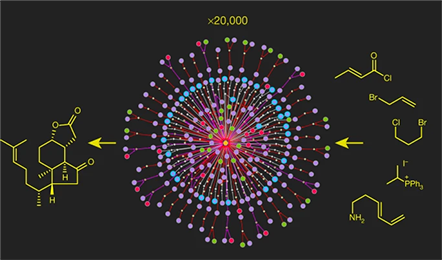Computational planning of the synthesis of complex natural products

In this Nature paper from 2020, researchers showcased advances in computer-aided synthetic design. Prior to publication, no algorithm had yet been able to design plausible routes to complex natural products, which require multistep planning.
The authors demonstrated that such computational synthesis planning is possible, provided the program’s knowledge of organic chemistry and data-based AI are augmented with causal relationships, allowing it to ‘strategize’ over multiple synthetic steps. The routes designed, three of which were validated in the lab, were mostly indistinguishable from those designed by human experts in organic synthesis.
Earlier programs were designed to only ‘think’ one step at a time and were limited to simple targets which could easily be designed by human chemists without computer assistance. Until this work, no algorithm had yet been able to design plausible routes to complex natural products.
Over the last decade, the authors have been developing a hybrid expert–AI system, SYNTHIA™ Retrosynthesis Software, due to the fact that purely data-oriented artificial intelligence (AI) approaches are not adequate to plan syntheses of complex targets. SYNTHIA™ now knows more than 100,000 expert-coded rules which include stereoselective and scaffold-directed transformations.
These high-quality rules which generate specific retrons (or synthons) has been refined by the addition of filters which evaluate chemical reaction locations by using either machine-learning or quantum-chemistry methods.
To learn more, read the Full Paper Here.
